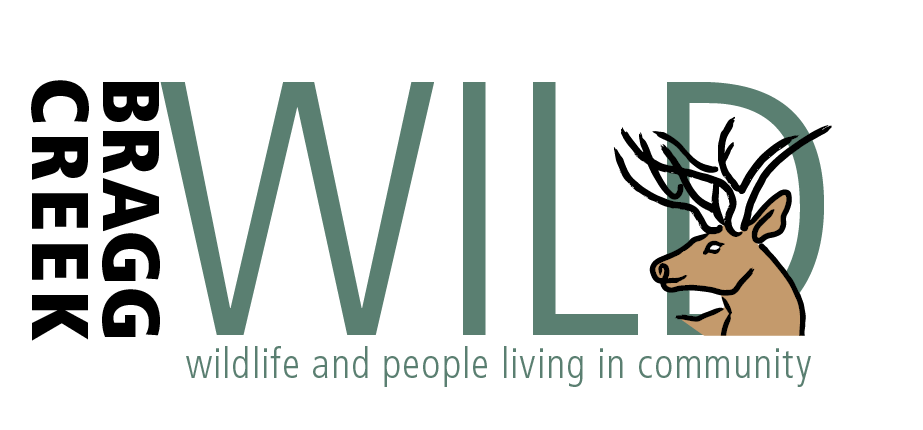IN A RUT – ROAD SAFETY IN AUTUMN by Bragg Creek Wild
As summer warmth gives way to autumn, big changes are underway in deer movements and behaviours.
In the summer months, male deer tend to band together in the deep woods for protection from predators. They alternate taking quick naps through the day, while a few deer remain awake and alert.
From early September to mid October when the velvet peels off their antlers, they usually remain in these groups in their preferred deep forest territory, beginning to spar gently.
As October progresses, the stags irritability and aggression increases dramatically. They leave their groups and engage in increasingly violent sparring matches. They become intolerant of one another and begin to seek out does. Now they will spend almost all of their energy defending an established territory near female/s in heat. At this point, the stags are obsessed with the does, and with fighting, in fact they are so distracted they barely even eat. They become highly unpredictable, and unaware of anything but the rut. By late October and early November the bucks are usually at their most agitated.
We must always remain vigilant for wildlife at any time of the year, however November is the peak month for wildlife-vehicle collisions (WVCs) in Alberta, with deer representing about 80% of those incidents. The highest risk period for wildlife collisions is October through January, between 7 p.m. and 11 p.m. So its a good time to review safe driving practices.
- Always scan the ditches ahead of you for signs of wildlife
- Slow down! The faster you travel, the slower your reaction times
- Be especially vigilant at early morning and dusk and use high beams to illuminate roadway edges
- Slow down at curves, hills, or areas known to be frequented by deer
- Remember that deer are likely to travel together, if you see one, expect more
- Never leave your lane to avoid hitting an animal
- Brake firmly and steer slightly to avoid a head on collision, if possible a glancing blow
In 2019, the Miistakis Institute released the report “Highway 22: Human and Wildlife Safety Assessment”. The conclusion of the 45 page in-depth study reveals that “Animal Vehicle Collisions are highest between Priddis and the junction of Highway 567 (north of Cochrane)… If the goal is to reduce overall collision numbers, these highway sections would be the focus of mitigation strategies.”
So, we clearly see in this data what we already know to be true that our health, and the health of our wild neighbours is inextricably linked.
If you do experience a wildlife collision call 911 if you or a passenger is injured. Never approach an injured animal, it could be very dangerous. In the event of an injured animal, call Alberta Fish & Wildlife at 403-297-6423 (between 8:15 a.m. – 4:30 p.m. Monday – Friday) or 1-800-642-3800 (outside of office hours). If an animal is deceased and you are able to, drag it off the roadway and call Volker Stevin at +1 888-877-6237.
Please visit us at www.braggcreekwild.ca and follow us on fb at www.facebook.com/groups/braggcreekwild to learn more about what we are doing to ensure a wild and natural Bragg Creek for future generations. We would love for you to join us in any capacity. Be safe and have a joyful autumn.
*Note collision statistics from AMA: ama.ab.ca/articles/wildlife-road- safety-tips
*Additional Highway 22: Human and Wildlife Safety Assessments www.rockies.ca/files/reports/Hwy%2022_Human%20and%20Wildlife%20Safety%20Assessment%20Report_June2019.pdf


























